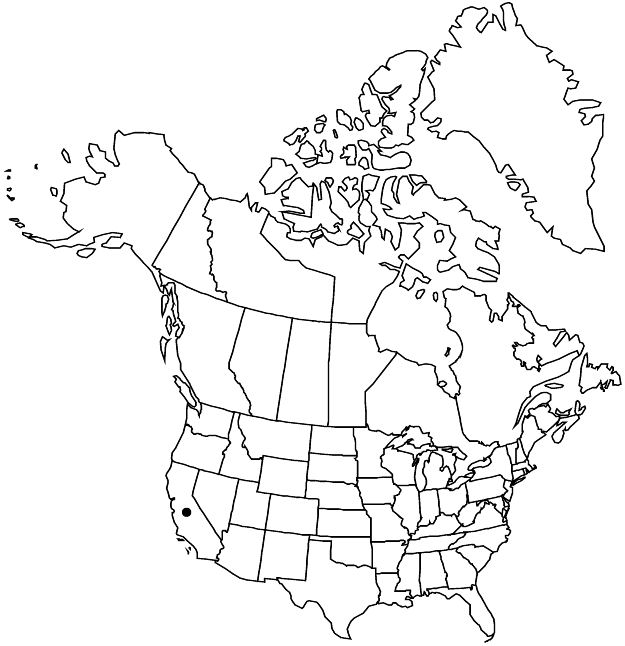Horkelia cuneata var. puberula
Novon 17: 318. 2007.
Plants green; eglandular hairs sparse or absent, spreading, glandular-hairs not obscured. Stems erect, 3–6 dm. Leaflets 5–12 per side, elliptic to obovate, 5–25 mm, distinctly pinnately veined. Inflorescences open, most flowers arranged individually. Pedicels (2–) 5–10 mm, proximalmost to 40 mm. Flowers: hypanthium interior rim usually glabrous, sometimes sparsely pilose; petals oblanceolate to narrowly obovate, 2–4 mm wide; filaments 1–2.5 × 0.5–2 mm.
Phenology: Flowering spring–summer.
Habitat: Coastal ranges away from the immediate coast, sandy to gravelly soil, coastal sage and chaparral communities
Elevation: 70–900 m
Discussion
Of conservation concern.
At its most distinctive, var. puberula is represented by historic collections from the hills and plains of Los Angeles, western Riverside, extreme southwestern San Bernardino, and northwestern San Diego counties; these populations have now largely been destroyed by urbanization. Scattered populations still exist within this core area, to what extent and with what level of ensured continuity remains uncertain. In addition, multiple populations of Horkelia cuneata from as far north and west as San Luis Obispo County have characteristics of var. puberula; these tend to intergrade with var. cuneata, as do some historic collections from the core area.
Selected References
None.
Lower Taxa
"thin" is not a number."/3lengthofsepals" is not declared as a valid unit of measurement for this property."wide" is not a number."dm" is not declared as a valid unit of measurement for this property."dm" is not declared as a valid unit of measurement for this property."dm" is not declared as a valid unit of measurement for this property.
